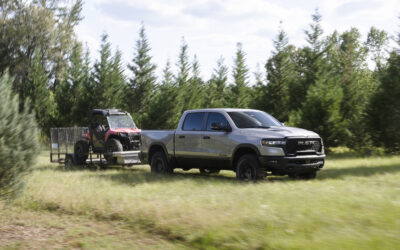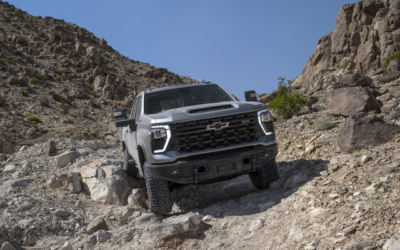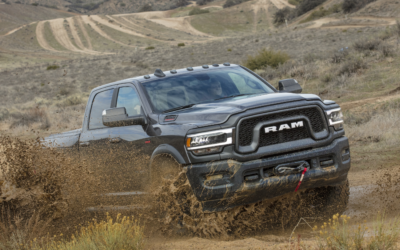Know Your Fleet Truck Tires
Fleet managers today need to realize that their fleet truck tires are more than just where the rubber meets the road. It is important to understand the intricacies of your fleet’s tires to make the best of it.
The Basics of Tire Load Ratings
One of the first things that fleet managers need to be aware of is the tire load rating. Essentially, the load rating of a fleet truck tire has a direct impact on the capacity a truck can carry.
Tires of different models, manufacturers and types have different load ratings, depending on several factors. The construction, application, inflation pressure and size of the truck are some of the things that come into play when determining a tire’s load rating.
Tires of all shapes and sizes have their individual recommended load ratings. The Tire and Rim Association is responsible for standardizing the organization of tires in the United States. They publish a yearbook every year to include inflation tables and load tables for each tire size. This information is also displayed on the sidewall of tires.
In order to get the best performance out of your truck’s tires over a long time, make sure that the maximum air pressure and load recommendations mentioned are not exceeded. If you are ever in doubt of the limitations, it is recommended that you contact the customer service team of the manufacturer to get the information you need.
Fleet Truck Tire Size 101
When it comes to tire sizes, there are typically three sizes seen in light-duty trucks: P-Metric, LT-Metric and Euro-Metric. A large number of ¼ and ½ ton trucks utilize P-Metric and Euro-Metric tires while you will find LT-Metric size tires more commonly on ¾-ton and 1-ton trucks.
The “P” in P-Metric stands for passenger and this is a global term given to the size of tires. Other than some light-duty trucks, you will find these in coupes, sedans, small SUVs, crossovers and minivans.
The LT-Metric tires are more commonly found in light trucks because that is what the “LT” stands for. Class 1 to Class 3 commercial vehicles use LT-Metric tires since they are capable of carrying heavier loads. They have a higher inflation pressure depending on the load range.
Euro-Metric tires are a fleet truck size used only for passenger vehicles. They do not have the “P” in numbering. They can have the same size as P-metric tires, but with small differences in the load capacity and inflation pressure tables.
Experts recommend that you use the vehicle placard or owner’s manual, which come with the vehicle to make sure you get the right tire size with the recommended max load carrying capacity and max inflation pressure for your fleet truck tires. Vehicle manufacturers will always specify the best possible tire size and inflation pressures, based on the design of a vehicle and its maximum load carrying requirements. You need to make sure that the new tire you are considering has an equal or higher load carrying capacity than the original recommended one if you plan to change your fleet truck tires.
Load Ratings and How they Are Affected by Tire Ply
Before load ranges became a thing, ply rating was the metric used to recognize the relative strength of a tire. The higher the numerical rating or ply count, the stronger and heavier the construction of a tire and vice versa.
The material used for constructing tires has improved drastically over the years and that is why fewer body plies are needed to get to the right tire strength now than in the past.
For all purposes, the tire ply nowadays is little more than a nod to the old system when bias ply truck tires were dominating the industry. The number of plies in a carcass or body determined the carrying capacity of fleet truck tires. Radial truck tires today need just one steel ply in the carcass, but this is still used as a means to measure the carrying capacity. A 14-ply tire will have a greater carrying capacity than a 12-ply tire.
The most important carrying capacity identifier is the Load Index since the cotton ply rating was rendered obsolete due to the introduction of the alphabetical Load Range rating in 1972.
Trailer Tires and Their Differences
A trailer tire is subject to similar standards as all fleet truck tires. Fleet managers and operators need to be careful about the weight rating of trailer tires. They need to be able to carry the maximum weight, which might be placed on the trailer axle.
The thing with trailer tires is that they are not always loaded with even weight distribution over the axle in comparison to steer axle tires. Steer axle tires can carry the weight of the truck itself but the load within the trailer is subject to change, based on the load they are carrying.
Fleet Truck Tires in the Past Decade
Over the past ten years, there have been little modifications made in terms of additional load range values, super single tires and other modifications.
While there have been some additional Load Range values implemented to increase the load carrying capacity of particular tire sizes, not much else has changed. Manufacturers have added a 10,000-pound load capacity to the 315/80R22.5 Load Range L tires from what used to be a 9,090-pound load carrying capacity for a single tire by placing speed restrictions.
The load carrying requirements of trucks continue to increase and this is the reason why fleet truck tires are being offered in greater sizes with better load carrying capacity. Super Single tires are also making headway into the overall industry to make sure that fleet trucks are not just able to increase the load carrying capacity, but also increase fuel savings.
There is also the fact that modifications are being made to the trucks. The load range F tires are fast becoming the primary load range for tires to accommodate for the consequent increase in higher load carrying capacity requirements across the industry.
Source:
https://www.worktruckonline.com/329088/how-to-understand-truck-tires-load-ratings-sizes-more






